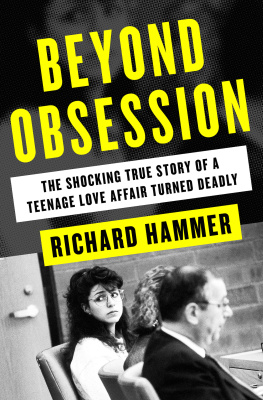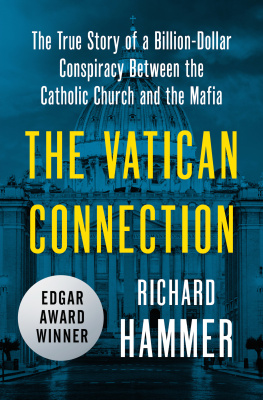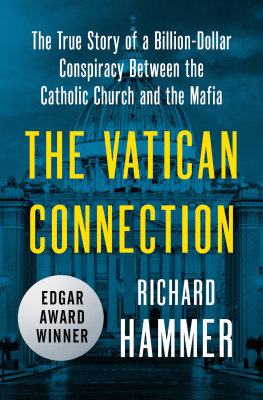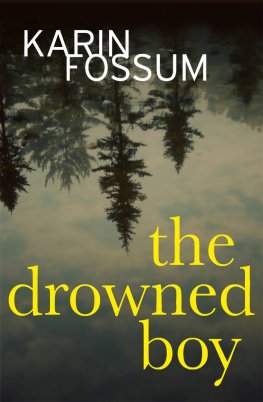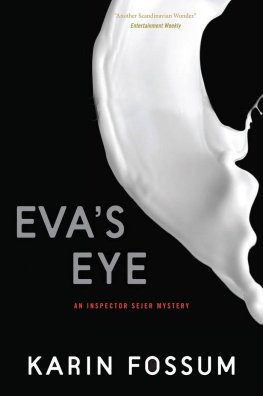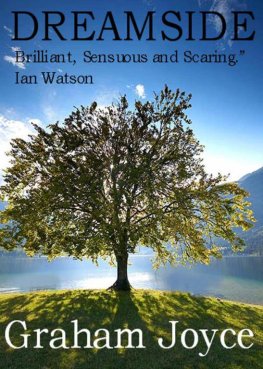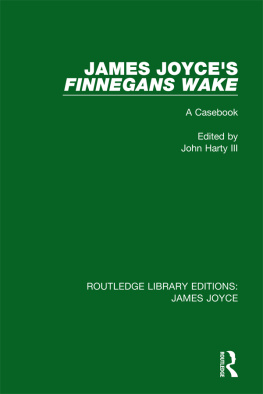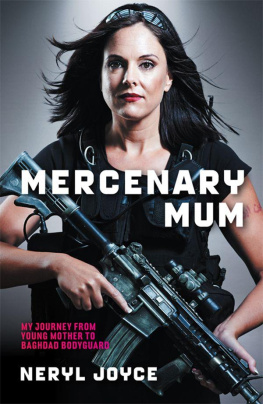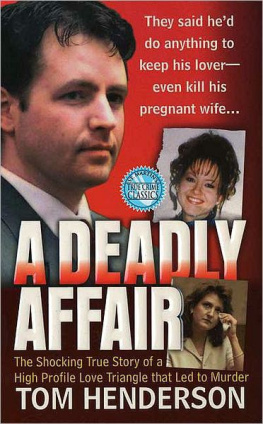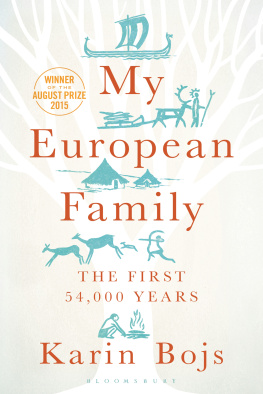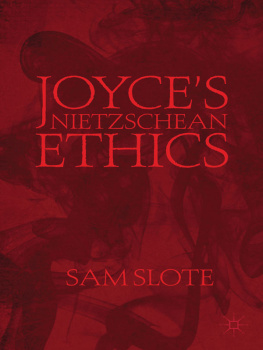Beyond Obsession
Richard Hammer

Authors Note
This is a work of nonfiction. The reader will find in it events that defy logic, actions that would not be credible in fiction, people whose motives seem often irrational and not easily explained, sometimes beyond simple explanation or even any explanation at all. But life does not follow formulas, and neither people nor events behave as we would wish them to or as we believe and expect they should. Yet this story is a true one, the events did happen and these people are real.
The story is a mystery, its solution still debated. There are a number of events about which the major participants told conflicting versions, sometimes vastly and critically different. In most instances I have presented both versions, to give the reader the opportunity to make up his or her own mind on which seems most reasonable, on which seems most clearly to arise from what went before and from the personalities of the antagonists. I have, though, tried to set down guideposts, which the reader should take merely as my view. If there are solutions to the unanswered questions that hover over the outcome, they lie in the story itself and how the reader interprets it. As will become clear, different people have read the evidence in different ways.
Some mention must be made about the section dealing with the trials of Dennis Coleman and especially of Karin Aparo. A trial, contrary to television and fictional presentation, is a study in tedium. It is long stretches of legal argument and repetitious and befuddling questions and responses, broken now and then, but not often, by an illuminating colloquy. There are few surprises, for any good lawyer should know the answer to a question before he or she asks it, and there are almost never one of those dramatic climaxes so dear to fiction. These trials were different only to the extent that witnesses gave widely conflicting testimony.
In setting down what seemed to me the high points and critical moments in direct examination and cross-examination in these trials, I have tried to edit out the repetitions and obfuscations. On occasion I have juxtaposed testimony that was separated by hours or days because such testimony essentially dealt with the same event or was otherwise directly related. To the greatest extent possible, though, nothing has been taken out of context or put into a frame that it did not have in the courtroom, and the questions and answers are as they were given by attorneys and witnesses.
A final note: This book, like any work of nonfiction, could not have been written without the help of a great many people. And so I must thank all those people in the town of Glastonbury, Connecticut, and other places in the state who went out of their way to talk to me and share their memories and opinions. Most did not want their names mentioned, and I have not done so. The same is true of various police officers and other public officials from the town and the state who did talk to me, though they were under a court order to prevent them from doing so, under the assumption that the cases finally would be resolved and the order lifted by the time this book appeared, though it remains in effect to this day.
Though I spent a considerable period of time with Dennis Coleman, three of the principals in this story refused to talk about it. They were Karin Aparo, Christopher Wheatley and Kira Lintner. What appears in relation to them, then, is a result of what they said in court or to the police or elsewhere and what those who knew them imparted to me. Without the cooperation of those friends, who spoke openly to me, any understanding of these three, and others, would have been impossible.
Several people deserve my special appreciation for the unstinting help they provided. Because some are mentioned during the course of this book, I will not cite them here. But I must particularly thank M. Hatcher Norris, the attorney for Dennis Coleman. I would have been lost without his generous assistance. He was the first person I spoke to, and he shared his experiences, pointed me in a number of directions, opened innumerable doors and was always available when I needed him for advice. James Cavanaugh, who headed the state police investigation of the murder and has since retired, dug into his recollections and turned over to me masses of letters, diaries, photographs and other documents. Dr. Eugene Goldberg, a psychoanalyst, and Dr. Robert Broad, a psychologist who has dealt extensively with disturbed adolescents, both friends of mine, took the time to explore facets of this story with me, to provide me with their insights and head me toward various studies that proved essential to understanding the participants in this story.
I must also thank Martin Gross, who came upon this story and brought it to me. Without him, I would never have written this book. Finally, there is my wife, Arlene, who listened for a year while I tried to fathom what had happened, whose insights helped me find what I hope were the right directions and who took the time from a very busy schedule to read this book in manuscript from its very first words and offered her invaluable suggestions and corrections gently. If there are faults in this work, they are mine. Whatever merit it has, I share with her.
Why, what could she have done, being what she is?
Was there another Troy for her to burn?
W. B. Y EATS
No Second Troy
My only love sprung from my only hate!
Too early seen unknown, and known too late!
W ILLIAM S HAKESPEARE
Romeo and Juliet
PART ONE
I WILL DO THE DEED
PART TWO
WHY THE DEED WAS DONE
PART THREE
HOW THE DEED WAS DONE
PART FOUR
WHAT THE DEED COST
August 5, 1987
Joyce Aparo was missing. The forty-seven-year-old former social worker, who was one of the most valued employees of Athena Health Care Associates, hadnt shown up for work on this hot and rainy Wednesday morning. It was not like her. A single mother raising a sixteen-year-old daughter after three bad marriages, she was dedicated to her work. She was never late.
At first nobody was concerned. About six weeks before, somebody had rear-ended the 1986 Volkswagen Jetta that Athena leased for her. She had suffered whiplash, and since then the pains in her neck had been growing progressively worse. Finally she had decided to see a chiropractor. One of the partners in Athena had arranged an appointment with the best man in Waterbury, Connecticut, where the company maintained its offices. The doctor was a very busy man, his calendar full, appointments scheduled weeks in advance. As a favor he agreed to make time for her. Joyce was due there at ten in the morning, so perhaps, without telling anyone, she had decided to go straight to his office from her home in Glastonbury, about thirty miles to the east, rather than show up at the Athena office first.
But just after ten Michael Zaccaro, one of Athenas founding partners and a very close friend of Joyces, called the doctors office to check. Joyce wasnt there.
Mrs. Aparo, the receptionist said, had not appeared for her appointment, and she had been about to call to find out if anyone at Athena knew whether she was merely late or, in fact, intended to cancel. Zaccaro said he had no idea why Joyce was late, and he was sure she intended to keep the date. He would try to find out what was holding her up.
Zaccaro dialed the number of the Aparo condominium on Butternut Drive, in the northern part of Glastonbury. There was no answer. Perhaps, he thought as he hung up, Joyce had been held up in traffic. Then his phone rang.

